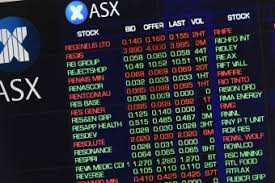Weekly market update
Written and accurate as at: Jul 17, 2018 Current Stats & Facts

It was a quiet week for the Australian equity market, with the market having a moderate pull back. That said, the prevalent theme of stock performance divergence remained evident: we had the likes of Flight Centre (FLT, +6.4%), Iluka Resources (ILU, +5.2%) and Bluescope Steel (BSL, +5.1%) advancing higher over the week; while others like Spark Infrastructure (SKI, -7.5%), AusNet (AST, -6.2%) and AGL Energy (AGL, -5.4%) dropped. The share price decline for both AGL and its peer Origin Energy (ORI, -4.2%), was largely attributable to the release of the ACCC’s report on electricity prices in Australia, which we provide more details on below.
As we have seen recently, industrial disruption comes from various angles. A report released last week by the ACCC, with the mandate to address decade-high electricity prices in Australia, has caused ripples amongst the domestic electricity players. Emboldened by the current political environment, where all the regulators are seizing every opportunity to state their claims and justify their prominent position within the domestic social/political landscape, the ACCC has made a number of key recommendations across all the three parts of our electricity market. These include the Network/Transmission segment, the Wholesale segment, as well as the Retail segment.
The report finds the Network segment to be the largest contributor to the increase in the electricity prices over the past decade. Legacy issues within the segment, including the gold-plating of some of the network businesses before they were sold off, have been noted by the report. As a potential solution, the ACCC recommends governments and the companies that own these businesses voluntarily cut their regulated asset base, which will help release some of the cost pressures on electricity prices. At the same time, the ACCC is aiming to bring down the wholesale forward price curve by another five dollars; notwithstanding that the electricity price curve is already in backwardation.
Last but not least, the report also targets the standing offers from the retail side: there are still approximately two million customers in Australia using these offers, which are much more expensive than the in-market discounted offers. There are suggestions that new regulator should set the price for these standing offers, if they are not canned completely.
Commentaries from the government in regard to the ACCC’s report have been open so far, which could see most recommendations end up being accepted. The ACCC also suggests the government step into the market as the buyer of last resort, so that smaller electricity generators could get longer-dated offtake agreement with the government for better funding, empowering them to compete with the larger players more efficiently.
Elsewhere, private hospital operator Ramsay (RHC, +0.3%) made an unsolicited bid to acquire European hospital operator Capio for $661m euros on Friday, which has been subsequently rejected by Capio on valuation grounds. It is still early days, and the deal could be a geographic fit for RHC, and marginally EPS accretive at the current offer price.
Finally, all the banks/financial groups have re-priced their mortgage book except for the Big Four banks, due to 7-year high bank funding costs, as represented by the widening spread between the 3-month BBSW and the overnight indexed swap rates (OIS). While this will become a headwind to the near-term earnings for the Big Four, it remains to be seen whether they will pluck up the courage to follow suit for the off-the-cycle interest rate hikes, as the Royal Commission now shifts its focus from banking to superannuation.










